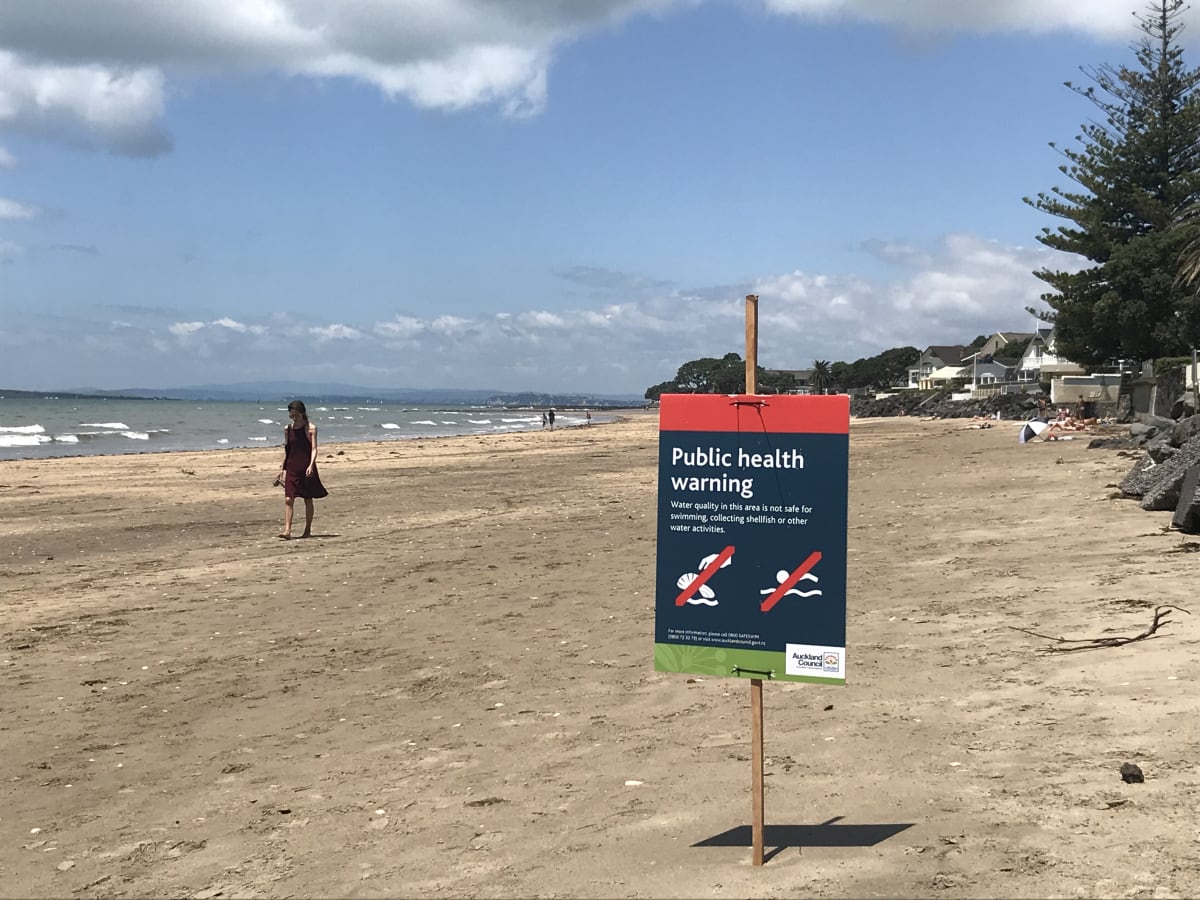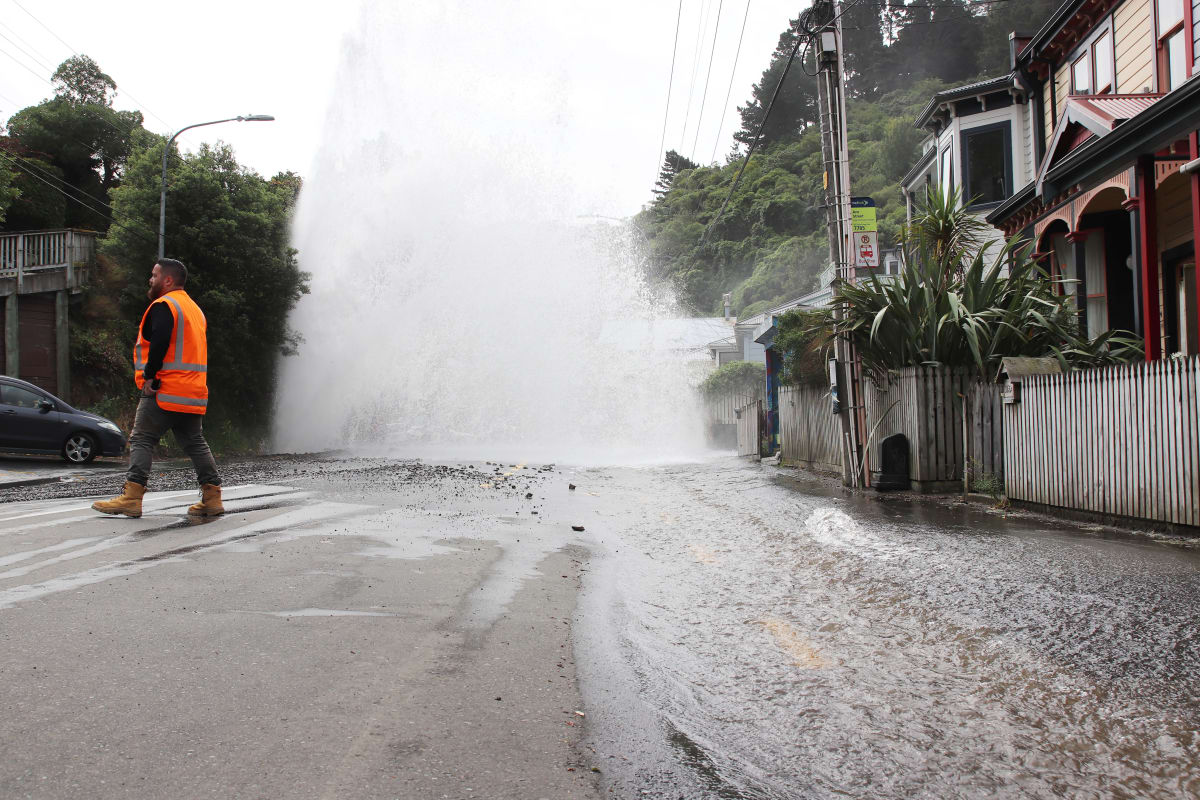
Analysis: Water NZ’s latest National Performance Review is a stark reminder why we need to get beyond the politics of Three Waters reform and get on with solving our dire water infrastructure problems
Last year, Newsroom published an article following the release of the previous National Performance Review. Called Our water problem in 15 worrying charts, it’s worth reading, though possibly not over breakfast.
The review catalogues the many and various ways our water infrastructure is failing - stuffed pipes, huge losses through leaks, unmonitored sewage overflows, massive unpunished non-compliance at wastewater treatment plants, significant skills shortages, historical underspending on water infrastructure by almost all the councils in the country - and so on.
Now, 12 months later, we have a new report. And what’s arguably the most worrying thing about Water NZ's latest performance review is how little has changed.
Regulation of stormwater and wastewater overflow discharges is piecemeal, the report says, and enforcement of consent non-compliance is rare - out of 553 illegal wastewater discharges over the 2020-2021 period, only 37 resulted in action being taken.
Plus ça change.
The workforce shortage is worse than before - the review says 10 percent of job vacancies were unfilled in the 2021 year, although its author, Water New Zealand’s insights and sustainability advisor Lesley Smith, says that's now looking optimistic.
“Anecdotally, I think if we ran the report right now, vacancies would be a lot higher.”

Attracting people into the water sector has always been hard, she says. With jobs slotted into 67 councils and a variety of engineering consultancies, it’s hard to see a clear career pathway. And at the same time as massive investment is needed in the industry - a Government-commissioned water consultancy report suggested $120 billion to $185 billion of extra water infrastructure spending would be needed by 2051 to overhaul New Zealand's decrepit and sometimes dangerous water systems - uncertainty around the Three Waters reform process and the huge amount of change that’s going to be needed is pushing people out of the industry.
A joint government-industry workforce development strategy to recruit the estimated 6000-9000 additional skilled water sector workers that will be needed over the next 30 years is launched today.
Unfair and inefficient
Meanwhile, the performance review brings up other problems. There’s a huge disparity in standards across the country - anything from consenting rules to equipment specifications.
That’s not only unfair, it’s also inefficient.
“Everything has to be tailored slightly differently depending on where you are, and that just adds up to extra costs for running the network. It’s like having to reinvent the wheel 67 times.”
The different standards also make it tough to compare what’s going on across the country and to find out what’s good and what’s not.
Smith says a couple of years ago the Government commissioned a report into how effective different wastewater treatment plants were at protecting the “receiving environment” - where the treated water ended up.
“They looked at all the different resource consents for wastewater treatment plants around the country and they found they’re all really really different.” So different, in fact, it was impossible to draw conclusions about which were doing a good job and which weren’t.
“It makes it hard to produce improvements when you can’t compare efficacy.”
There’s also a huge disparity between what people are being charged for water depending on where you live. The average New Zealand property paid $960 for water and wastewater services in the 2020/2021 fiscal year, but the highest charge was $2237.
Same with the wastewater component. The highest regional wastewater charge was $1205; the lowest was $140.
That's a problem when it comes to funding the huge investment that’s going to be needed to bring water infrastructure up to scratch. Most people outside Auckland, Kapiti, Tauranga and a spattering of other metered districts have little idea what they pay for water, let alone what level of service they get.
"In some parts of the country you have a water scheme that’s fully compliant with drinking water and environmental discharge standards and in another part you might have had to boil your water for years." Lesley Smith, Water NZ
Smith says she once tried, out of interest, to find out from public sources what the water component of her rates bill was for her home in Lower Hutt. She gave up. Her retired mother took up the challenge, digging through council and Wellington Water reports. She found the information - but it took all day.
“It’s problematic when you don’t know what you are paying and you don’t know whether you are getting good value. In some parts of the country you have a water scheme that’s fully compliant with drinking water and environmental discharge standards and in another part you might have had to boil your water for years.

A rough calculation from the latest Ministry of Health Annual Report on Drinking Water Quality shows at the time covered by the report, 2019-2020, more than 5,750 people in 25 areas were affected by permanent boil water notices. Many of these have been in place for years.
Meanwhile, many more people - some in quite big centres - had to boil water at least some of the time. That includes Kawarau (population 7700), Featherston (2600), Reefton (951), Alexandra (6000), Gore (7480). Even Christchurch (335,500).
A fifth of water lost through leaks
Leaks are another major unsolved problem. The National Performance Review estimates we lost 100 million cubic metres of water because of leaks in the 2021 fiscal year, about 20 percent of the total, or roughly equivalent to the combined volume of water supplied to Hamilton, Rotorua, Dunedin and Christchurch.
Only five of the 67 water authorities meet international best practice standards for leaks, the review says. The five providers at the bottom of the league lost more than a third of the water they produced. One lost 55 percent.
From the perspective of Te Mana o Te Wai - the fundamental principle governing decision making for water management and which puts protection of the health of freshwater above even that of people and the environment - leakage is a disaster.
But the way the system works in practice, with councils paying for a resource consent to use water but not then paying according to how much water they use, there’s little incentive to mend leaks. Rather the reverse.
“If you think about it from a council perspective, there's a small cost to providing each additional litre of water - like you have to put in chemicals and treat the water and you have to use energy to pump it around,” Lesley Smith says. “But compare that to the cost of sorting leaks. You have to figure out where the cracks are in underground pipes you can’t see, then maybe dig them up and replace them.
“So the costs of fixing leaks are huge, whereas the cost of wasting water is negligible.”
The Three Waters reform
The Government’s Three Waters reform is intended to resolve the problems highlighted in the Water NZ report and the Ministry of Health’s Drinking Water Quality review. The whole process started after four people died and at least 5000 people got sick when campylobacter got into the Havelock North water supply in 2016.
The Havelock North Drinking Water Inquiry found the contamination was a result of systemic failure across service provision, regulation and source protection – all aspects of the system were implicated.
Announcing the passage of the Water Services Act in September last year - legislation which gives Taumata Arowai the regulatory and punitive powers of a dedicated water regulator - Local Government Minister Nanaia Mahuta estimated 34,000 people in New Zealand fall ill from drinking water every year.
“This is unacceptable in a first-world country such as New Zealand. Everybody in Aotearoa should be able to get drinking water from the tap knowing that it is safe. We should also be able to swim or gather mahinga kai in our rivers, lakes or at the beach without fear of becoming sick.”

When they aren’t falling ill, or not being able to swim at the beach, or watching sewage cascade out of the roads, they are being told their water provider - in this case Wellington Water has somehow managed to not put fluoride into the capital’s drinking water for 10 months.
“Wellington Water had been monitoring and nursing the fluoride facilities along for a number of years but more recently, the issues with the facilities have become too onerous,” an RNZ news bulletin reported.
What? Was it also too onerous to tell anyone, including the local councils, which are meant to make sure Wellington Water is complying with the rules?
A changed narrative
The water reforms are complex, often technical, multi-faceted and far from perfect. But at their core is still the basic premise that our water system is in trouble, and needs fixing. Expensive fixing.
But instead of starting from that perspective, the Government’s solution, in particular the plan to merge the 67 water bodies into four water service entities, has turned into a political football.
Over the past few months there have been High Court challenges, the formation of a 31-council water protest organisation called Communities for Local Democracy (C4LD), and anti-Three Waters reform campaigners joining the Groundswell tractor rallies around the country last July and the recent anti-vaccine mandate protest at Parliament.
The Government commissioned a council-iwi water reform working group which came up with a new ownership structure it says makes future privatisation virtually impossible. The detractors are still not happy.
Water NZ’s Lesley Smith says somewhere in all the political discussion we’ve lost focus on what the issues are - the sort of critical problems she highlights in her report.
“It's very confusing for me. How did we get so off track?” Lesley Smith, Water NZ
“When we talk about Three Waters reform there’s been a lot of talk about governance and local control and local asset ownership, but there hasn’t been a lot of talk about water loss or wastewater overflows or treatment plant performance or drinking water quality. Those issues haven’t really been surfacing in the discussions at all.”
Smith has worked on the National Performance Review for eight years and watched important water infrastructure issues getting swept under the table at council meetings.
So when water reform became top of mind at Government level it was exciting, she says. Then suddenly anti-Three Waters reform posters started appearing in rural areas, at the Groundswell and vaccine mandate protests.
Water NZ remains agnostic on the reform model that gets adopted, Smith says, but hopes her report helps focus public discussion back where she thinks it should be.
“It's very confusing for me. How did we get so off track?”







